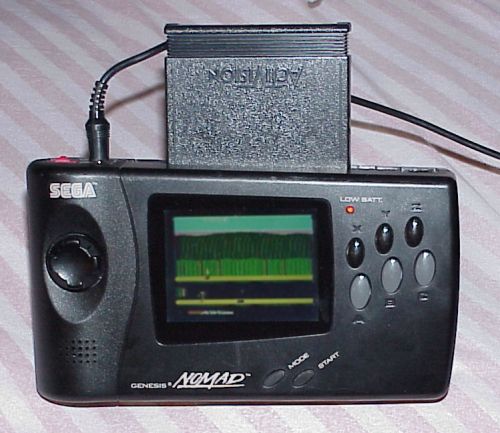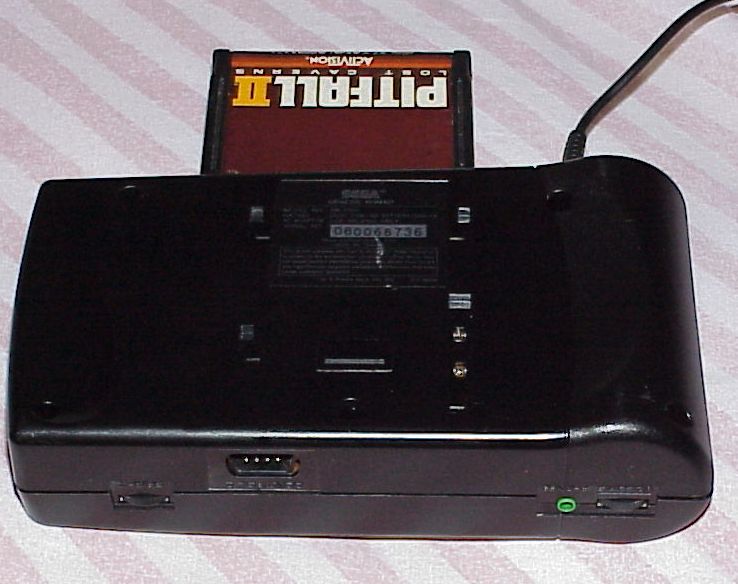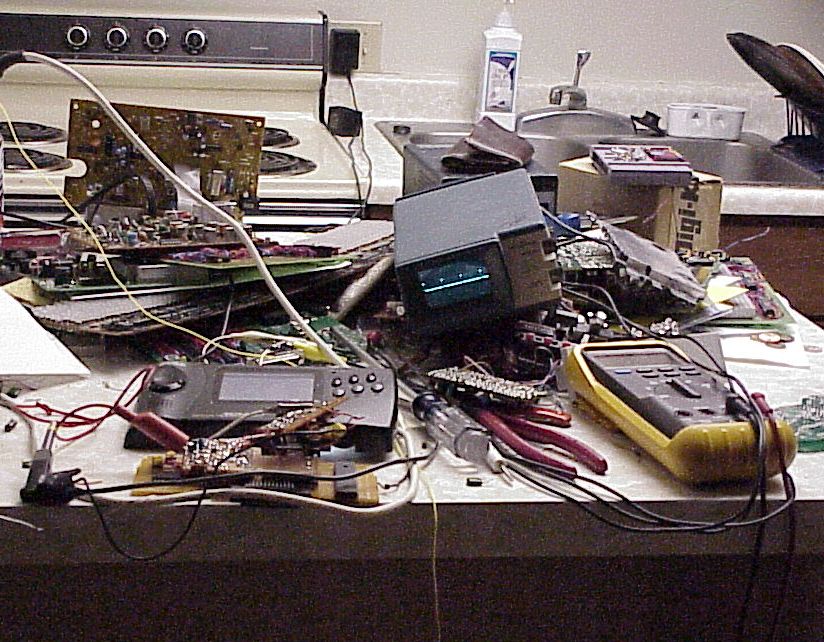
Stella Gets a New Body

The Puma 2600 running Pitfall 2
Introducing the Puma 2600. My portable Atari 2600 VCS. It is the remains of a Sega Nomad, converted to play Atari 2600 games. The actual Nomad guts have been removed, however, and a custom-made Atari 2600 and decoder circuits have been installed into the shell. I will be using it to test those "Flea Market" cartridges... while at the flea, as well as for trips, and general puttering around while I'm waiting for a download to finish. If there is enough interest, I may ebay it and/or make and sell a couple.

Back side, showing cart & joystick port
The cartridges install upside down so there would be enough room to clear everything inside the packaging. The DB9 allows one to use a second joystick or paddles for single player games. If portability is desired, the unit can be run off of a rechargable battery, or regular AA cells. Normally, I just use the AC adaptor :-). Even the TV type and skill switches are functional. The X and Y buttons control skill for player 1 and 2, respectively. They act as a mode toggle- pressing the button once sets easy skill (low frequency beep), pressing again selects hard skill (high frequency beep). Pressing the button again reverts back to easy skill. TV type is similar, only it uses the Z button. Low beep = colour, high beep = B&W. The settings of these three buttons are "saved" when power is removed. Buttons A,B, and C are all wired to the normal 2600 fire button. Mode is the 2600's select, and Start is the 2600's reset.

Puma 2600 Guts
Inside, there are two stacked pieces of perf with all the guts located on them. The top board has the joypad interface processor, and the chroma decoder, which converts the 2600's composite video into RGB to run the LCD display. The bottom board contains the 2600 gut, Y/C separator, and a bunch of the adjustment pots for the RGB decoder.

Puma 2600 in the middle of development. (Scope is showing the Horiz. Synch for the LCD)
Specs: Compatibility - 100%, minus Indy 500 (needs the Driving Controllers) Weight - Less than 1 pound Battery - Life is greater than 1 hour (Also can use an AC adaptor) Design Time - 4 days |

